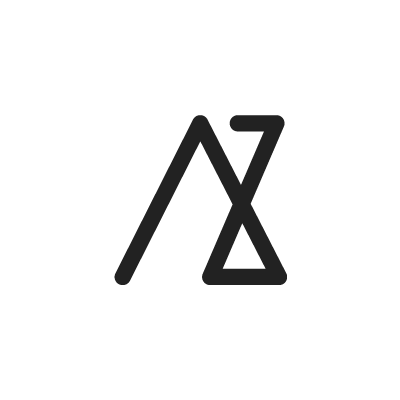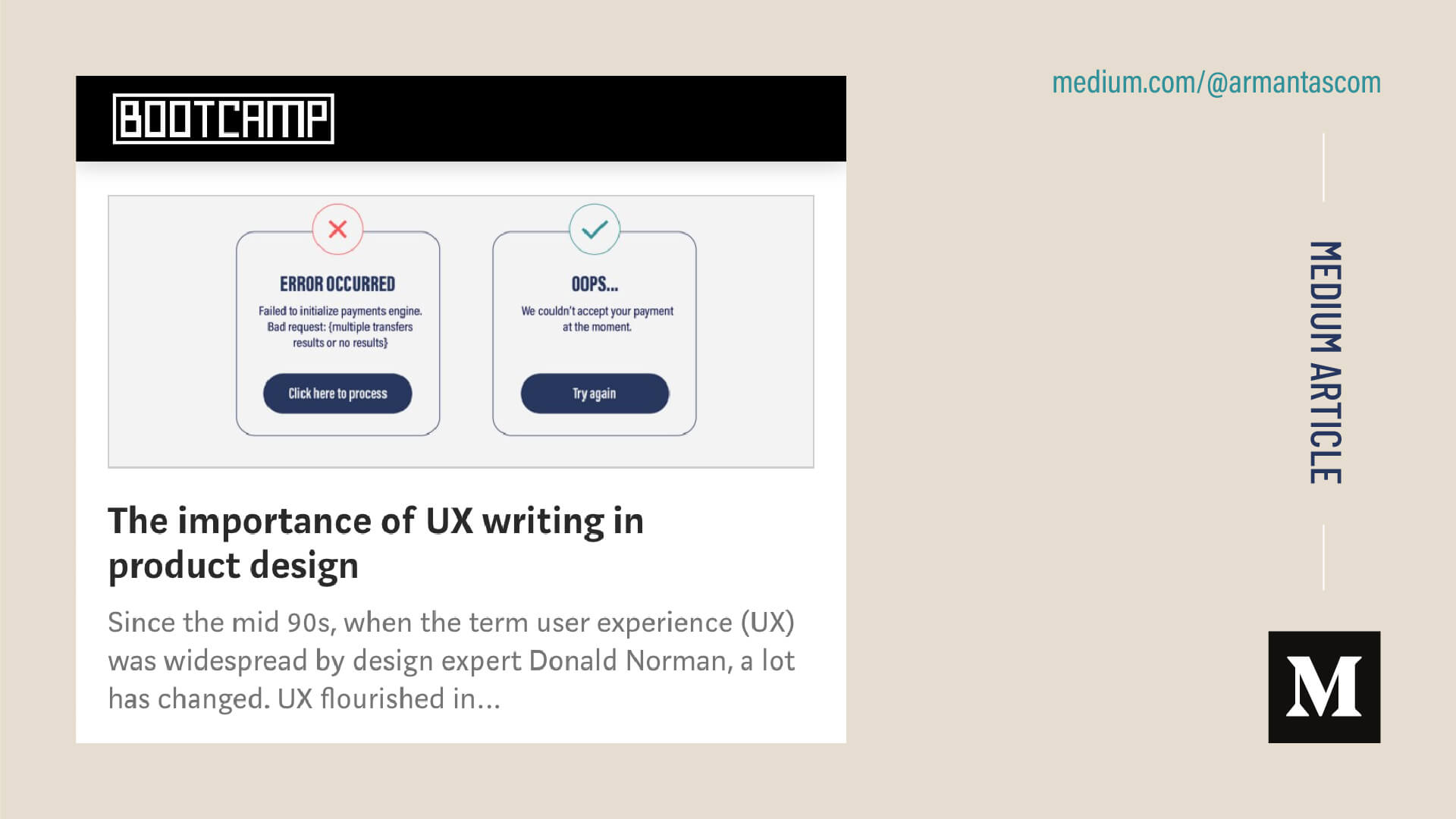The importance of UX writing in product design
Since the mid-90s, when the term user experience (UX)was widespread by design expert Donald Norman, a lot has changed. UX flourished in the product design industry forming a new generation of experts specializing in UX, CX, IA, IxD and similar fields. Ok, I admit, maybe it’s a bit too much of similar letter combinations.

Please forgive me if I missed any of the important letter combinations — Read more on this subject
As of today, User Experience expansion in design-related fields influenced companies from the Valley like Google, Dropbox and Airbnb to begin challenging copywriters to write based on design principles and for the users’ needs. In this context, new UX writing or so-called content design roles are formed.
So, what is it? UX writing is the act of writing copy for user-facing touchpoints. I would describe it as an emerging niche discipline within the User Experience. It’s an act of thoughtfully crafting every copy in your digital product, from call-to-action buttons (CTA’s), product descriptions to copy used in chatbots and voice interactions, so that language feels natural and conversational.
Even though interfaces are becoming lighter from the content perspective, every word on the app and web must be well-thought in terms of how clear, useful and guiding it is for the user.
Let’s go deeper into why UX Writing is becoming important and how it can be beneficial in any organisation creating better user experiences for the product users. UX writing improves product significantly. This is the statement I would like to escalate the most. In product design UI screens must be filled with convincing copy and other graphical UI elements, so that users would be well informed and neatly guided through the user interface. It turns out, there is a lot of research on how different texts within the same product give better results:
- A/B tests on changing button text such as “Sign up” to “Sign up free” or “Get started” reflect in better conversions, which leads to better overall user guidance within the system. Words are an integral part in terms of product usability.

- Conversational text formulations on different areas within the product also give great results on positive user experience with each click, tap, scroll, or swipe. For example, UX writers would never use “You entered wrong password” and “Invalid user credentials” within the same app. But perhaps, none of these two should be used. Because the first one sounds a bit too negative and the second too nerdy.

- Great copy in UI also helps create emotional value, which persuades users to make desired decisions. If you want to read more on design for persuasion, emotion and trust (PET Design), you can take a look at this article.
- It’s more effective to create the perception of UI functionality using words. Some words may transfer the idea more clearly. We may call it bridging the gap between the visual layout and the user. Of course, in most situations generic icons, which are widely used like telephone, email or play button graphical representations are perceived faster.
- Consistent product copy guides users way better. If you’re using “Next” “Continue” and “Proceed” within the same product, it kills the natural user flow.
UX Writing forms a better brand image. Creating a brand is all about establishing positive relationships with the users. Right microcopy impacts a user’s emotions and intentions. - Defining brand principles will be a good start to establish your target audience, content aesthetics and written content guidelines around your brand or product. It can be done by describing a brand in up to 3–4 adjectives. Get to know more about building brand attributes and personality in this article.
- Setting the voice and tone, creating a content style guide for the brand, will help your product humanise to stand out from competitors.

UX Writing is booming. Big players in the market already have this type of specialists, other small companies are following. LinkedIn has open UX writing jobs even in small countries like Lithuania. But not everyone gives the same title for a similar job description. Combine UX writing open positions postings together with content strategists, UI writers, content designers and product writers and you will get different numbers.
- Voice user interfaces, conversational bots are already here. It will be the new medium of interfaces. Chatbots, virtual assistants and similar technologies form the new era of human-computer interaction (HCI).
- Every conversational experience has to be designed and carefully crafted. This means more focus on chatbots, speech recognition, speech-to-text and similar functionalities.

UX Writing complements your skillset. If you already have mastered UX design and you’re good at usability, research and building interactive prototypes, UX content writing could be your cherry on the cake.
- Agile teams mainly consist of cross-skilled product development specialists. T-shaped specialists (Or so-called experts in at least one thing but also somewhat capable in a broad spectrum of other things) in development teams are a norm. Your UX writing skills could easily complement not just yours, but the whole team’s capabilities in delivering even better products.
- If you have a background in copywriting or any other creative field, writing copy for digital products empowers you to broaden knowledge in different fields and lets you work with IT engineers in the same team shoulder to shoulder. Who knows, maybe bringing your own creative attitude to the tech table may shift your career in the long run.
Bottom line
The UX design industry expanded dramatically and opened new possibilities for writers for the years to come. In this context, written words have more weight now in the tech industry than ever before. Let’s hope that more people will find their place under the sun.
👉 Originally posted on Bootcamp

